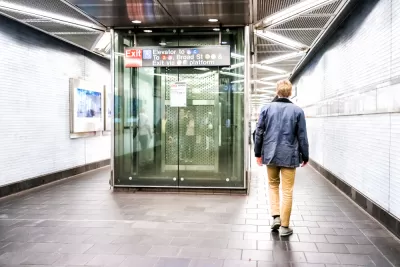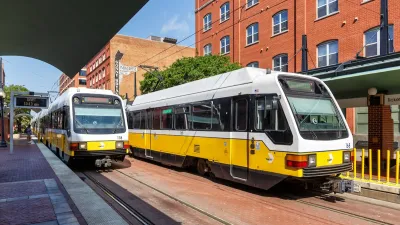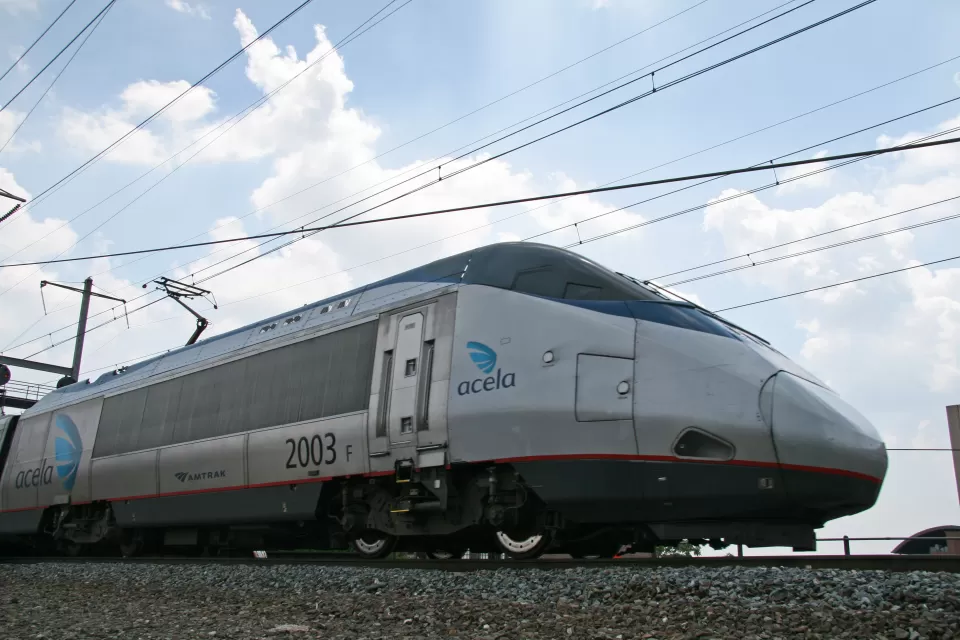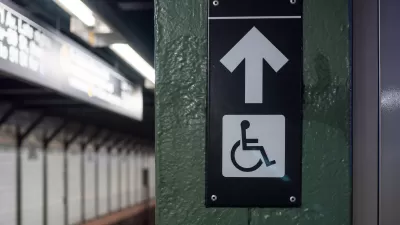The MTA announced plans for new or improved elevators at almost two dozen stations as part of its pledge to make more of its stations fully accessible.

New York’s Metropolitan Transportation Authority (MTA) announced plans to improve accessibility by installing or replacing elevators at 23 stations, acting on its pledge earlier this year to make 95 percent of its stations fully accessible by 2055 in the wake of multiple lawsuits.
As Audrey Wachs reports in The Architect’s Newspaper, “Varied station designs across the aging system make upgrades challenging, but advocates have long contended that the MTA can and should be doing more to improve accessibility: The city has one of the lowest percentages of accessible stations of any major transit system worldwide.”
The agency is entering into a public-private partnership, known as P3, to fund the work on eight stations. “Under the P3 model, the developer will partially finance the project, with equity repaid only if the elevators and other improvements are built and maintained to the MTA’s standards.”
As advocates repeatedly point out, “Accessible transit doesn’t just benefit people who use mobility aids: they also benefits seniors, caregivers lugging strollers—there are 553,000 young children in the city—visitors with heavy suitcases, and people who are just plain tired.” Moreover, accessibility includes more than just elevators and ramps. One lawsuit filed against the MTA calls on the agency to close the vertical and horizontal gaps that can pose a danger to people with mobility or visual impairments.
FULL STORY: MTA announces much-needed elevator upgrades at multiple subway and train stations

Study: Maui’s Plan to Convert Vacation Rentals to Long-Term Housing Could Cause Nearly $1 Billion Economic Loss
The plan would reduce visitor accommodation by 25,% resulting in 1,900 jobs lost.

North Texas Transit Leaders Tout Benefits of TOD for Growing Region
At a summit focused on transit-oriented development, policymakers discussed how North Texas’ expanded light rail system can serve as a tool for economic growth.

Why Should We Subsidize Public Transportation?
Many public transit agencies face financial stress due to rising costs, declining fare revenue, and declining subsidies. Transit advocates must provide a strong business case for increasing public transit funding.

How to Make US Trains Faster
Changes to boarding platforms and a switch to electric trains could improve U.S. passenger rail service without the added cost of high-speed rail.

Columbia’s Revitalized ‘Loop’ Is a Hub for Local Entrepreneurs
A focus on small businesses is helping a commercial corridor in Columbia, Missouri thrive.

Invasive Insect Threatens Minnesota’s Ash Forests
The Emerald Ash Borer is a rapidly spreading invasive pest threatening Minnesota’s ash trees, and homeowners are encouraged to plant diverse replacement species, avoid moving ash firewood, and monitor for signs of infestation.
Urban Design for Planners 1: Software Tools
This six-course series explores essential urban design concepts using open source software and equips planners with the tools they need to participate fully in the urban design process.
Planning for Universal Design
Learn the tools for implementing Universal Design in planning regulations.
Ascent Environmental
Borough of Carlisle
Institute for Housing and Urban Development Studies (IHS)
City of Grandview
Harvard GSD Executive Education
Toledo-Lucas County Plan Commissions
Salt Lake City
NYU Wagner Graduate School of Public Service





























